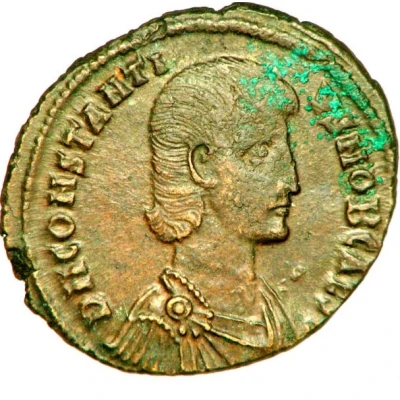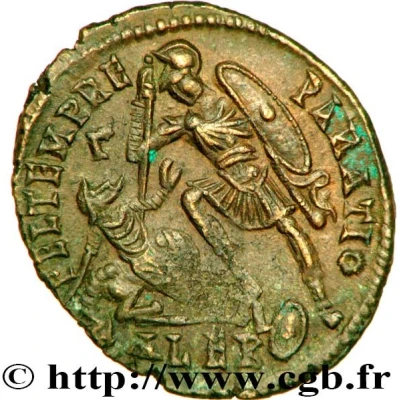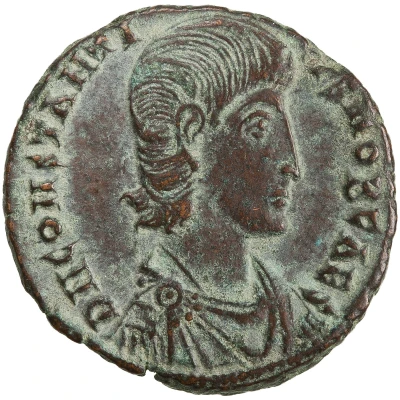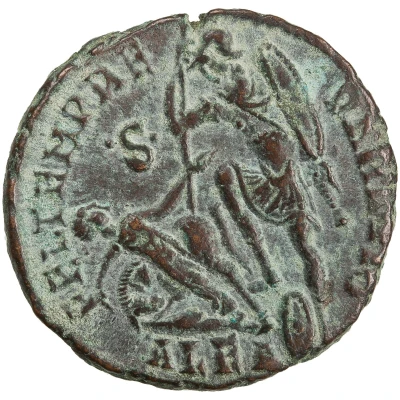
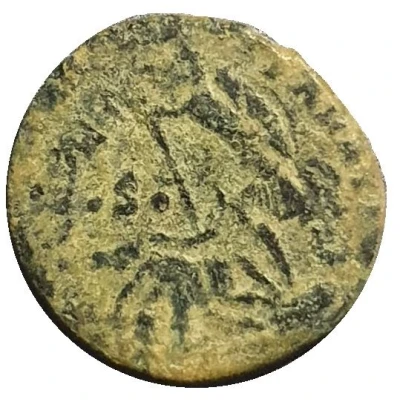

© infierno
Nummus - Constantius II ·S· / FEL TEMP REPARATIO; Alexandria
| Bronze | 3.45 g | 19.5 mm |
| Issuer | Rome › Roman Empire (27 BC - 395 AD) |
|---|---|
| Emperor | Constantius II (337-361) |
| Type | Standard circulation coin |
| Years | 351-355 |
| Value | Nummus (1⁄7200) |
| Currency | Solidus, Reform of Constantine (AD 310/324 – 395) |
| Composition | Bronze |
| Weight | 3.45 g |
| Diameter | 19.5 mm |
| Shape | Round (irregular) |
| Technique | Hammered |
| Orientation | Medal alignment ↑↑ |
| Demonetized | Yes |
| Updated | 2024-10-04 |
| Numista | N#371519 |
|---|---|
| Rarity index | 93% |
Reverse
Soldier, helmeted, draped, cuirassed, advancing left, spearing fallen horseman with right hand and wearing shield on left arm; shield on ground to right; horseman wearing cap, facing soldier, extending left arm
Script: Latin
Lettering:
FEL TEMP RE-PARATIO
·S·
Comment
https://numismatics.org/ocre/id/ric.8.alex.78Interesting fact
The Nummus - Constantius II coin was part of a large-scale currency reform implemented by Emperor Constantius II in the 4th century AD. The reform aimed to address the inflation and economic challenges of the Roman Empire by introducing a new standardized system of coinage. The Nummus coin was one of the new denominations introduced during this reform, and it remained in circulation for over a century. This particular coin is interesting because it features the image of Emperor Constantius II on one side and the goddess Felicitas (Fel Temp Reparatio) on the other. Felicitas was the Roman goddess of good luck, prosperity, and happiness, and her image on the coin symbolized the hope for a prosperous and happy reign under Constantius II. Additionally, the coin was minted in Alexandria, Egypt, which was an important center of trade and commerce in the Roman Empire. The coin's bronze composition and relatively low weight also reflect the economic challenges of the time, as the empire struggled to maintain the value of its currency and control inflation. Overall, the Nummus - Constantius II coin offers a fascinating glimpse into the economic, social, and political landscape of the Roman Empire during a time of significant change and upheaval.
